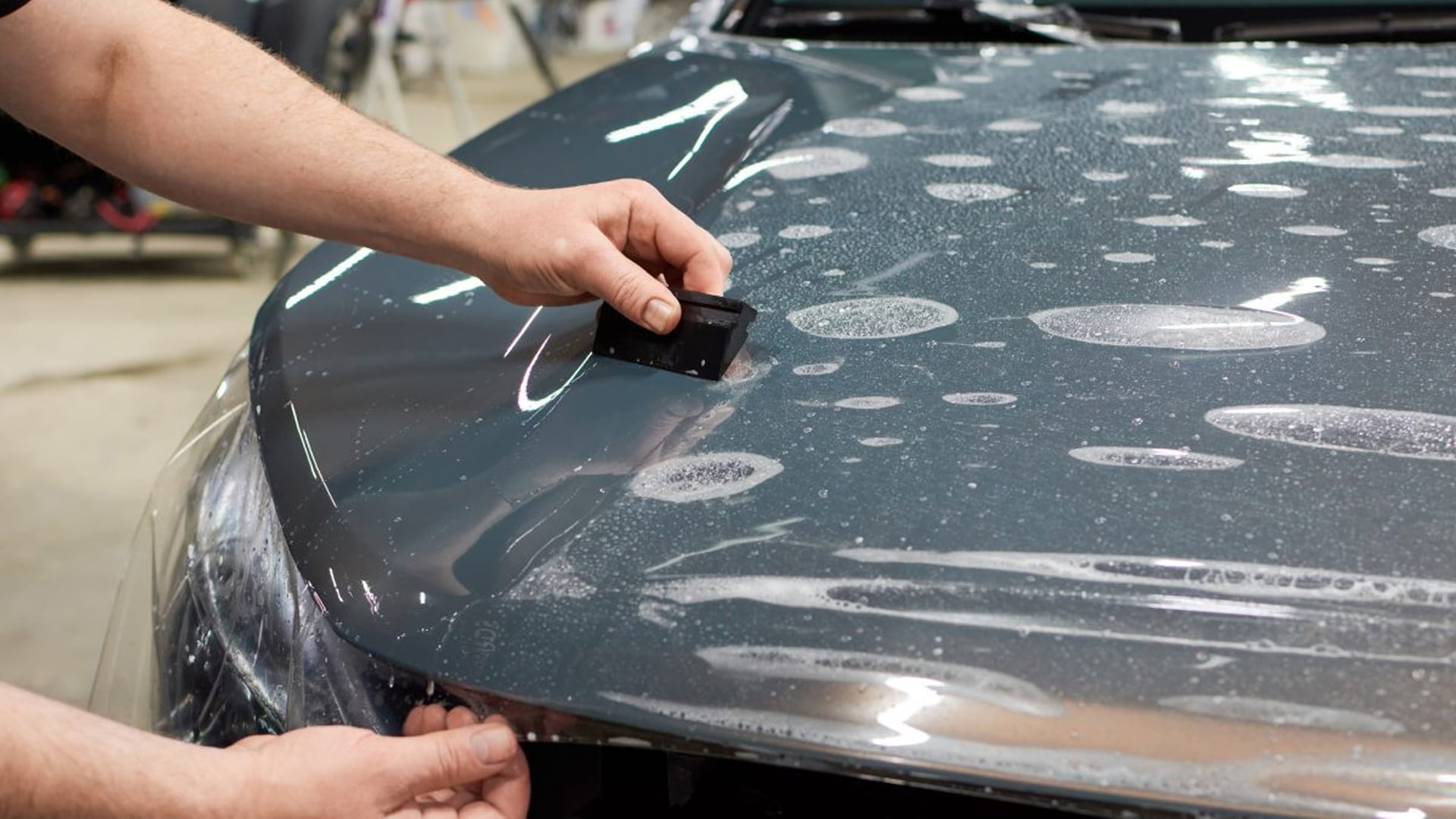
Paint Protection Films (PPF) are a kind of shield that can be put on the outside of cars, trucks, and motorbikes to protect them from damage. The paintwork is shielded by these clear, thermoplastic urethane sheets, which are made to withstand various types of damage.
Discussing the advantages of Paint Protection Films (PPF) is the main goal of this essay. To buy and maintain our cars, we as car owners make a considerable financial commitment.
However, UV rays subject the outside surfaces to fading, chipping, stains, and other potential dangers continuously. It serves as a barrier against these outside dangers by putting a thin layer of PPF to the paintwork, maintaining the vehicle’s original quality and appearance.
The benefits of utilizing PPF coating will be covered in-depth in this post. We will look at how it prolongs the paint’s life, guards against damage from road debris, fends against sunlight fading and makes cleaning easier. Car owners may protect their significant assets and retain the aesthetic appeal of their automobiles by understanding these advantages and making informed selections about car protection film.
Protection Against Scratches and Rock Chips
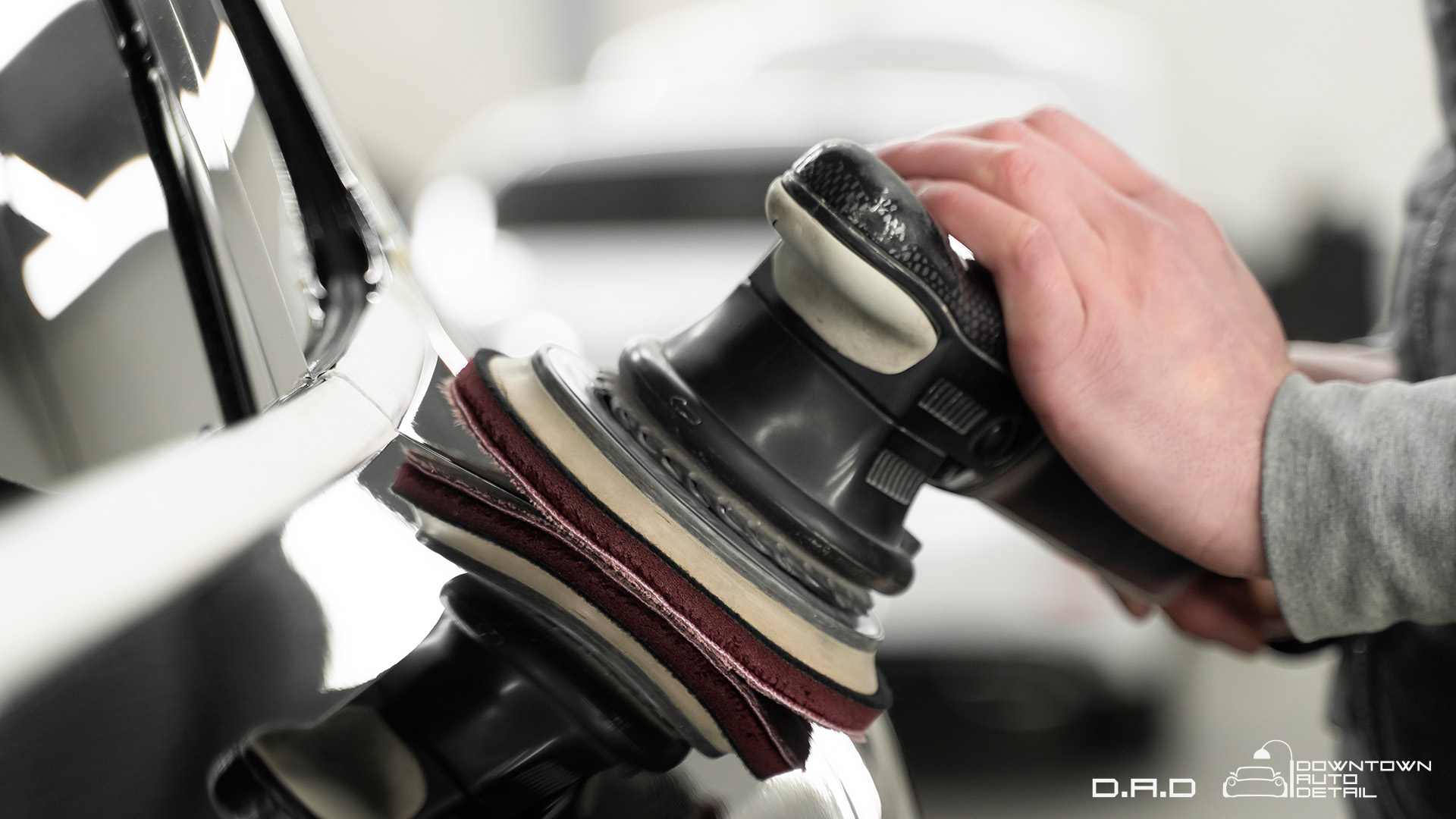
Paint Protection Film (PPF) acts as a protective barrier for a car’s paintwork by providing a durable, transparent layer of film that shields the underlying paint from various forms of damage. The film is typically made of thermoplastic urethane, which possesses self-healing properties that allow it to repair minor scratches and swirl marks over time. When applied to the vehicle’s surface, PPF adheres to the paintwork, creating a barrier that acts as a sacrificial layer.
PPF coating is particularly effective in preventing scratches caused by environmental factors. The film’s strong and resilient nature serves as a shield against everyday wear and tear, such as small debris, tree branches, dust, and sand particles that can inadvertently come into contact with the car’s surface. These minute contaminants, which might otherwise cause scratches or abrasions, are absorbed by the PPF instead, preserving the original paintwork.
One of the primary advantages of PPF is its ability to shield against rock chips and road debris. While driving, vehicles can be vulnerable to loose stones, gravel, and other objects kicked up from the road surface. These projectiles can cause unsightly paint chips and dings on the car’s exterior. PPF, with its strong and impact-resistant properties, acts as a barrier that absorbs and disperses the energy from such impacts, preventing the underlying paint from getting damaged. By providing this additional layer of protection, PPF helps to maintain the overall appearance and value of the vehicle.
In summary, PPF acts as a protective barrier by safeguarding the car’s paintwork against scratches caused by environmental factors. It also plays a crucial role in shielding the vehicle from rock chips and road debris, preserving the pristine condition of the paint and reducing the need for frequent touch-ups or repairs.
Resistance to UV Damage
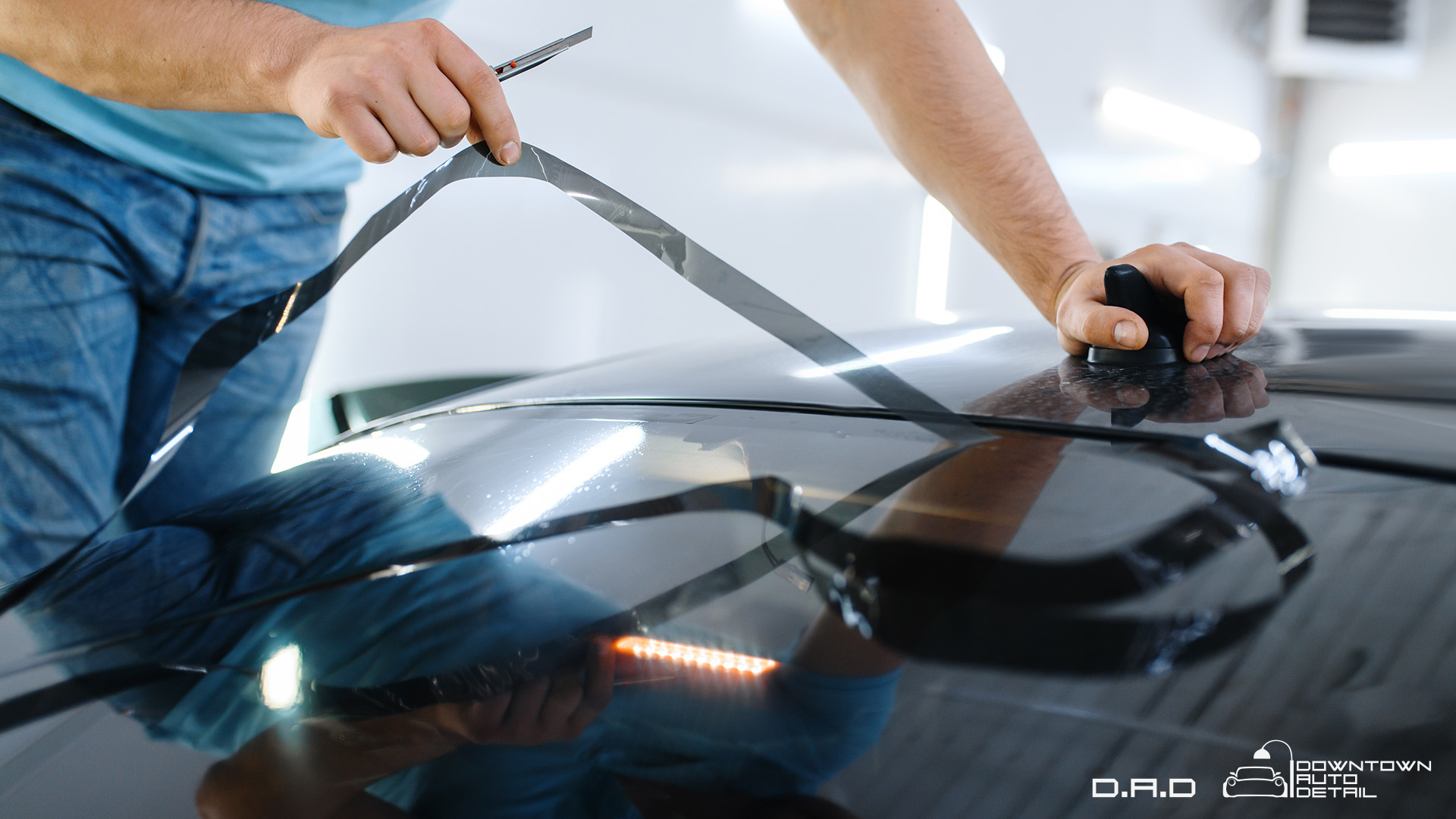
UV rays can harm a car’s paint job. Overexposure to the sun’s UV rays might eventually cause the paint to fade and lose its bright hue. The UV rays penetrate the paint’s top layer and damage the chemical links inside the pigments, giving the paint a flat and unappealing appearance.
UV rays can also cause the paint to oxidize, which can leave a powdery residue on the surface in addition to fading the paint. This oxidation process lowers the paint’s protective layer, leaving it more vulnerable to harm from outside elements including dirt, filth, and severe weather.
UV deterioration is protected using Paint Protection Film (PPF). The painted surfaces of the car are coated with PPF, a transparent, self-healing film. It has UV stabilizers that aid in preventing the paint from being damaged by damaging ultraviolet radiation.
PPF films successfully reduces the fading and discoloration of the paintwork of the car by erecting a barrier between the paint and the sun’s UV rays. The UV light cannot penetrate the paint and harm it since the coating both absorbs and disperses it.
UV protection is crucial in preserving the quality of a car’s paint. By shielding the paint from UV rays, PPF films helps maintain the original color and finish of the vehicle, ensuring it looks newer and more vibrant for an extended period. Preserving the paint quality also enhances the car’s resale value.
Moreover, UV protection helps prevent the paint from deteriorating and oxidizing, reducing the need for costly repaints or touch-ups. By investing in UV protection through it, PPF car owners can enjoy a longer-lasting and more visually appealing paint job, ultimately prolonging the overall lifespan and appearance of their vehicle.
Preserving Resale Value
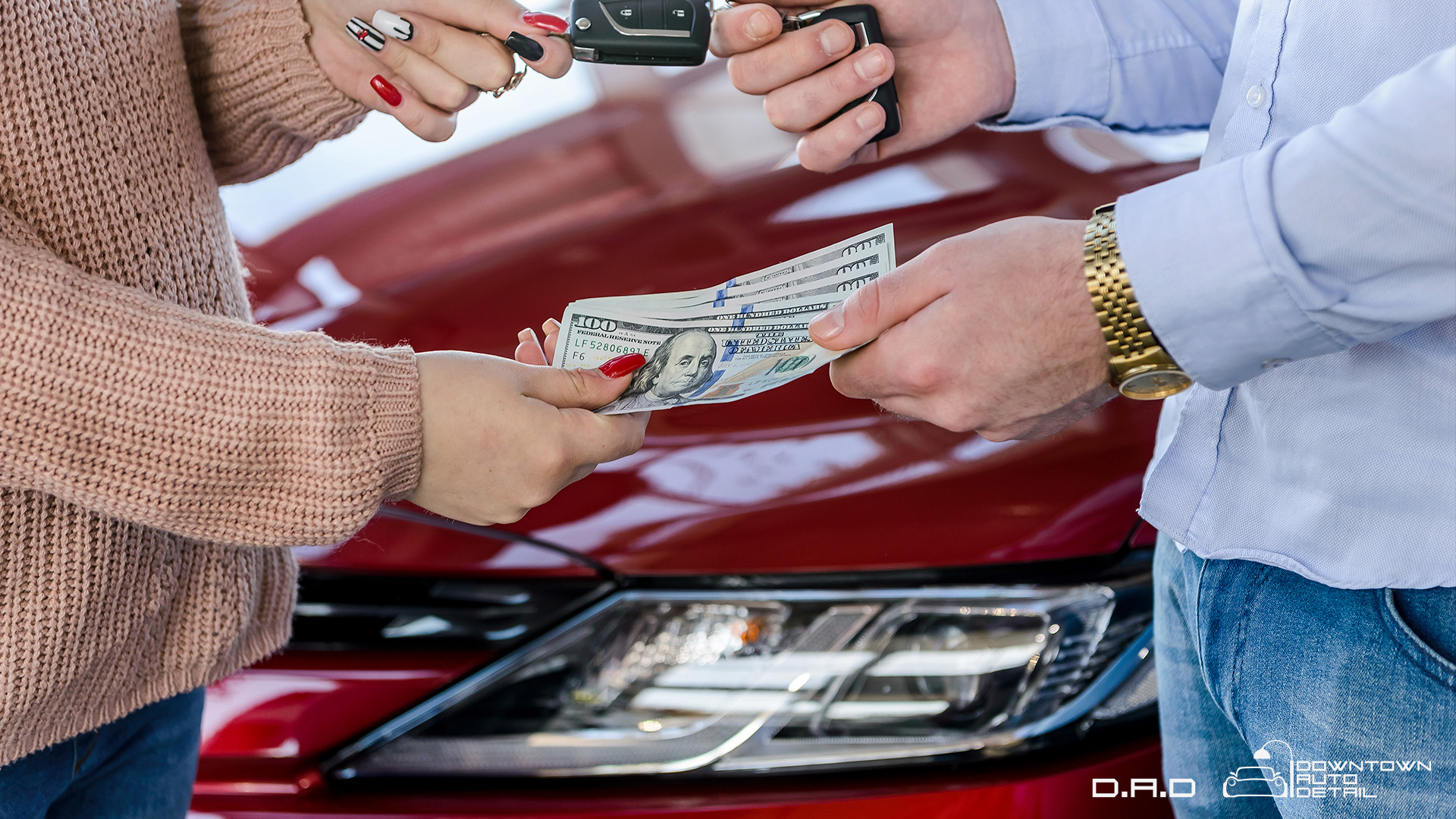
Maintaining a car’s paintwork is crucial for preserving its resale value. The paintwork is one of the first things potential buyers notice, and a well-maintained exterior suggests that the vehicle has been cared for properly. A car with faded, scratched, or chipped paint can create the impression that it hasn’t been maintained well overall, which can negatively impact its resale value. Aesthetic appeal plays a significant role in determining the desirability and value of a used car, so it’s important to keep the paintwork in good condition.
Paint Protection Film (PPF) is a highly effective solution for preserving a car’s original paint condition. PPF is a transparent, self-healing film that is applied to the vehicle’s exterior. It acts as a protective barrier against various elements that can cause damage to the paint, such as stones, road debris, bird droppings, and UV rays. PPF helps prevent scratches, chips, and fading, keeping the paintwork in pristine condition.
Investing in PPF offers several financial benefits for resale purposes. Firstly, by protecting the original paint, PPF helps maintain the car’s aesthetic appeal, which can increase its desirability among potential buyers. This increased demand can translate into a higher resale value for the vehicle.
Secondly, since PPF guards against common forms of damage, it reduces the need for costly touch-ups or repainting jobs in the future. This not only saves money but also ensures that the car’s paintwork remains in its factory-original state, further enhancing its value.
Additionally, having PPF installed on a vehicle can provide peace of mind to the owner, knowing that the paint is protected from everyday hazards. This can contribute to a higher sense of satisfaction with the vehicle, potentially leading to positive word-of-mouth recommendations and a stronger resale value.
Durability and Longevity

Paint Protection Film (PPF) is highly regarded for its exceptional durability and resistance to wear and tear. PPF is a clear, thermoplastic urethane film that is applied to the exterior surfaces of vehicles, providing a protective barrier against various elements.
One of the key advantages of PPF is its ability to withstand harsh conditions and physical impacts that can lead to scratches, chips, or abrasions on the vehicle’s paintwork. The film acts as a sacrificial layer, absorbing the damage and preserving the original paint underneath.
The lifespan of PPF can vary depending on factors such as the quality of the film, installation technique, and maintenance practices.
However, a well-installed and properly maintained PPF can last anywhere from 5 to 10 years or even longer. The film is designed to be resistant to yellowing, discoloration, and degradation from UV exposure, ensuring that it maintains its protective properties over time. Moreover, PPF can be self-healing to some extent, with minor scratches and swirl marks disappearing when exposed to heat.
PPF’s affordability is enhanced by its endurance. PPF protects the vehicle’s paintwork against daily dangers including stone chips, road debris, insect spots, and weathering by serving as a shield. This lessens the need for expensive paint repairs or repainting projects, which may end up costing much more than the initial investment in PPF. Car protection film can also increase a vehicle’s resale value by preventing external deterioration and preserving its attractive appearance for longer periods.
Overall, PPF is a great option for people looking to protect their vehicles’ paintwork and get the most out of their investment because of how long-lasting it is, how well it resists wear and tear, and the cost savings that follow.
Ease of Maintenance
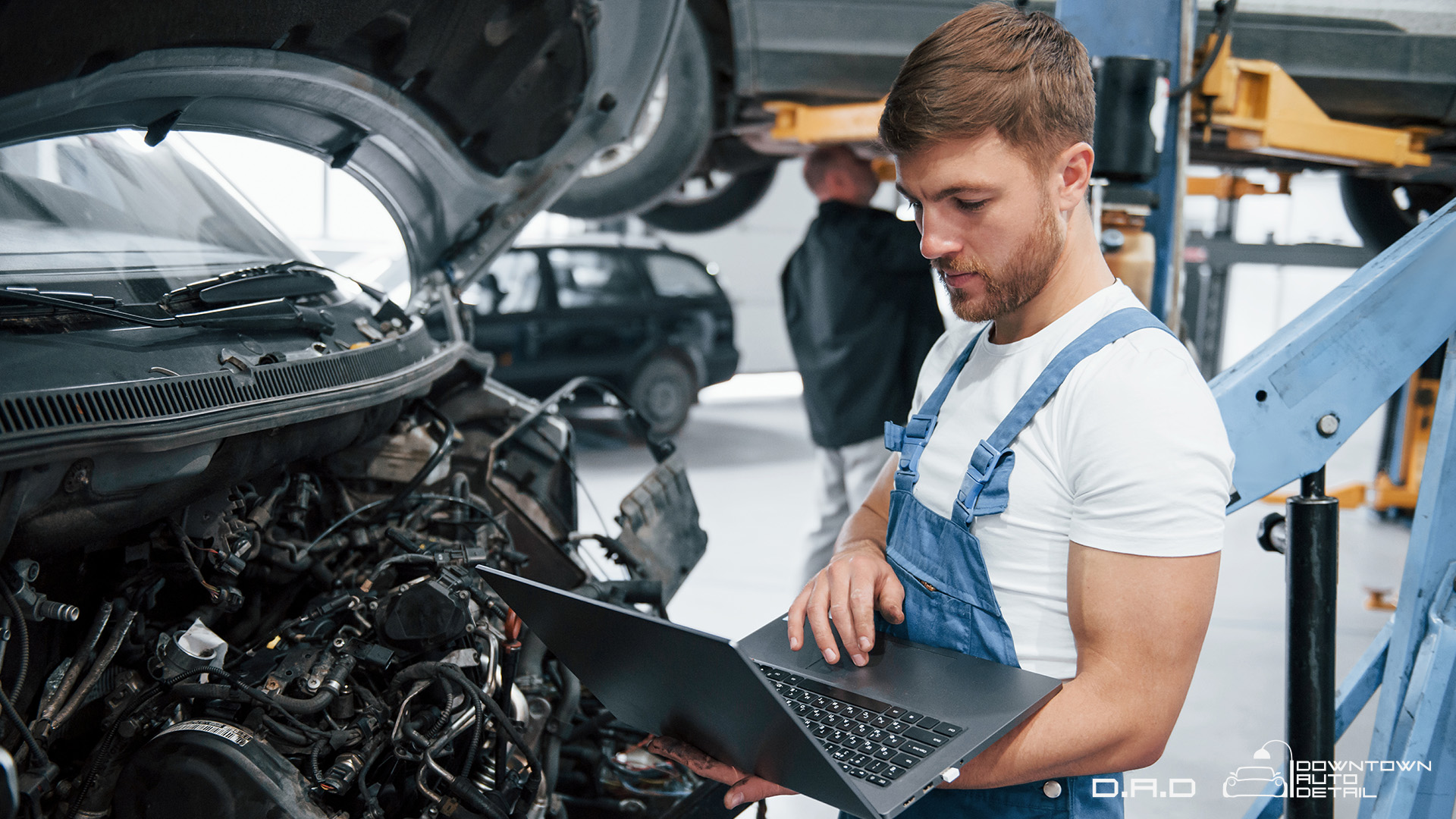
It offers important benefits when it comes to the simple cleaning procedure for cars with Paint Protection Film (PPF). PPF is a transparent, self-healing film that serves as a defense against a variety of environmental factors. PPF on car has several advantages, one of which is its resistance to stains, filth, and grime. It is simpler to clean the exterior of the automobile thanks to the smooth surface of the film, which prevents dirt from adhering firmly.
PPF makes it easier to wash and maintain a car’s exterior in several ways. The film, in the first place, offers a layer of defense that guards the underlying paint against dings, rock chips, and other types of damage. As a result, the original paintwork is protected during the cleaning process because the film absorbs the majority of the force.
PPF has a time-saving maintenance benefit that is important to note. Traditional car washing techniques frequently require meticulous attention to prevent damage to the paint, which might take time. However, when PPF is used, the film serves as a sacrificial layer, absorbing small dings and swirls and lessening the need for painstaking polishing. As the film adds a layer of protection that keeps the car’s exterior intact, the time needed for maintenance duties is greatly decreased.
PPF makes cleaning and maintaining cars easier in a variety of ways. It resists dirt and stains, shields the paint from harm, and cuts down on maintenance time.
Conclusion
The article’s conclusion identifies several advantages of Paint Protection Film (PPF) that make it a worthwhile purchase for car owners. First of all, PPF shields the car’s paint from scratches and fading by blocking numerous outside components like stones, trash, and UV rays. This guarantees that the car will keep looking good and hold its value over time. PPF also offers the car’s exterior long-lasting protection by being incredibly robust and stain-resistant.
PPF also offers simple maintenance because it is simple to keep clean and maintain a glossy sheen. Additionally, it lessens the need for frequent waxing and polishing, which ultimately saves time and money.
Therefore, I encourage readers to consider investing in PPF for their cars. It not only safeguards the vehicle’s paint job but also enhances its longevity and resale value. By choosing PPF, car owners can enjoy peace of mind knowing that their investment is well-protected.
In closing, the significance of paint protection cannot be overstated. Our cars are more than just modes of transportation; they represent our style and reflect our pride of ownership. By applying PPF, we can ensure that our beloved vehicles stay in impeccable condition, free from the wear and tear of daily use. Embrace the benefits of PPF and make the smart choice to safeguard your car’s appearance and value for years to come.
FAQ's
A translucent, thermoplastic urethane film called paint protection film (PPF) is used to cover a vehicle’s outside surfaces to protect them from environmental threats like rock chips, UV radiation, and scratches.
PPF serves as a sacrificial layer, deflecting rocks, other objects, and other things that could scratch or harm the paint. By shielding the paint from direct contact, it preserves the car’s original finish.
The hood, fenders, bumpers, side mirrors, door edges, and other sensitive regions prone to damage are among the sections of the car to which PPF can be applied.
No, PPF is practically invisible when correctly placed and does not change the way your car looks. It keeps your car’s original color and finish, letting its beauty show through while offering protection.
Depending on the brand and upkeep, high-quality PPF is made to endure for at least five years and possibly ten. PPF is a flexible and adaptable protection choice since it is removed without harming the underlying paint.
All types of vehicles, including automobiles, trucks, SUVs, motorbikes, and even boats, can use PPF.
Yes, paint protection film provides an added layer of protection for your car’s paint, helping to preserve its appearance and value.
Yes, 3M paint protection film is known for its durability and effectiveness in guarding against various types of damage to your car’s paint.
Yes, paint protection film works by acting as a sacrificial layer, absorbing impacts and preventing damage to the underlying paint.
It is recommended to have paint protection film professionally installed by trained technicians for optimal results and a seamless appearance.
Paint protection film works by creating a transparent barrier that shields your car’s paint from scratches, stone chips, UV rays, and environmental contaminants.
Yes, 3M paint protection film is highly regarded for its quality and long-lasting protection, making it a worthwhile investment for car owners.

